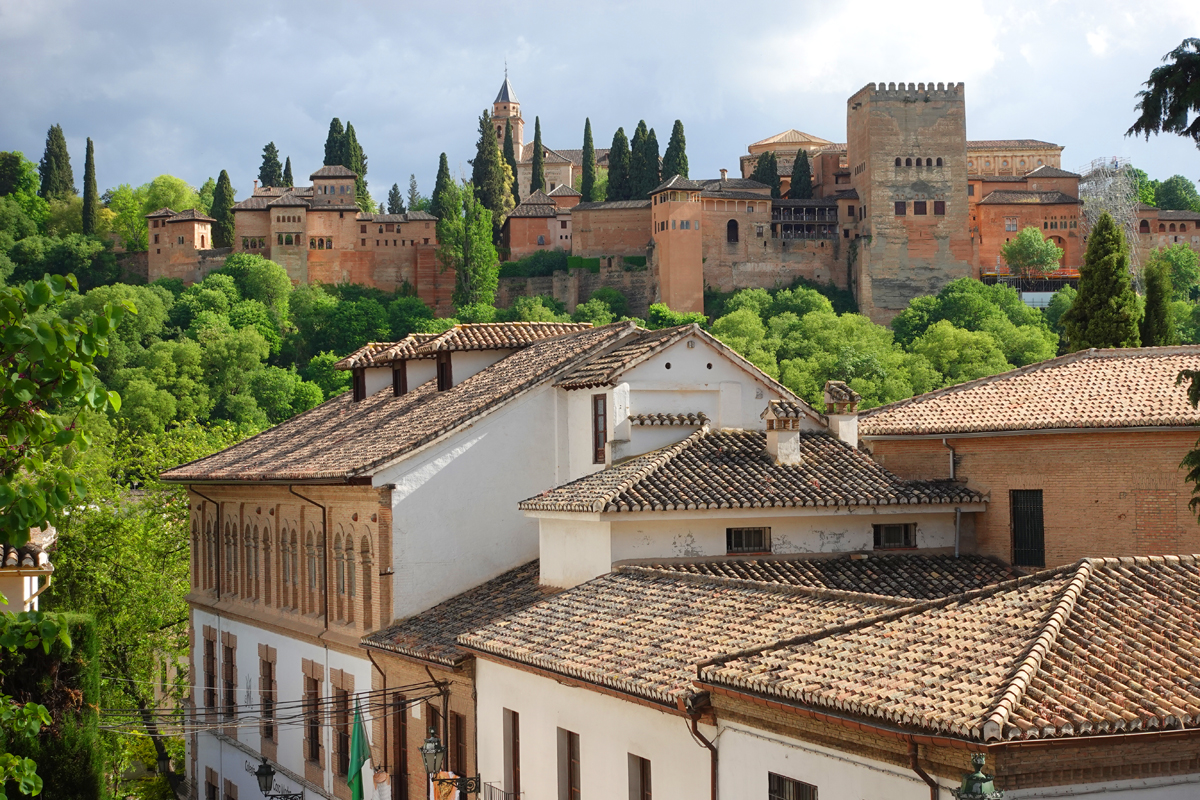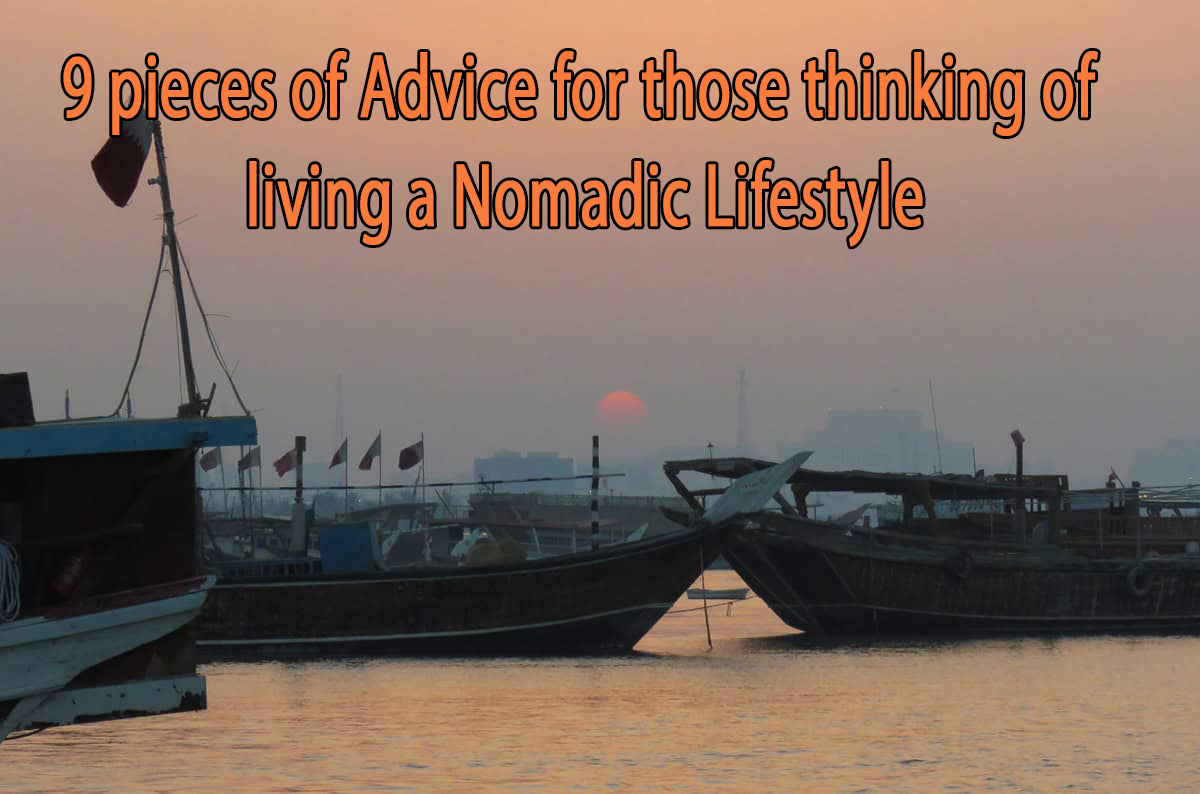
Planning and Resources for Slow Travel.
Slow travel is the most sustainable way to travel long term. It allows you to travel the world affordably (often more affordably than you did back home), more leisurely and more healthily. We did it for 6 years, “living” in places like Thailand, South Africa, Japan, Croatia and the Czech Republic.
What’s Slow Travel? Slow travel means exactly that: travelling slow. For us it usually meant staying 1 to 3 months in one location and using it as a base to explore a city or region.
Slow travel means connecting to people in the places we visit. When you’re somewhere a month you’ll see the same people: at the grocery store, at the local café, at the gym. Your neighbours. It gives you a chance to talk. And people are often curious about strangers in their midst. It’s incredible how good personal experiences with locals help shape your opinion about a place.
Slow travel means new, often challenging experiences. I would get a lot of satisfaction being able to go somewhere and learning how to “get things done”: navigating the public transport system, buying groceries at a farmer’s market, learning a few words in the local language. It can be stressful and awkward at times. But when you’ve figured it out and feel that you’re actually ‘living’ somewhere – and not just a stranger in a strange land – it fills you with a sense of accomplishment and comfort.
Slow travel means getting to see places off the beaten path, something most visitors don’t have the luxury to do. Tourists all visit the same things. It’s understandable: you’re somewhere for 3 days so you want to see all the things that a city is known for. Nobody is going to go to Prague without seeing the Charles Bridge. But when you slow travel it means you have the time to see other things besides the Charles Bridge. You can also have experiences that you would otherwise never have. When we were in Chiang Mai, we took Muay Thai lessons for a month. We got into the best shape of our lives. Other people may want to take cooking or language classes. When you’re slow travelling there are so many more things that you can experience.
But Slow travel also requires more planning than regular travel.
Planning an Extended Stay
Visas
Slow travel requires a different mindset from a regular tourist visit.
For example, travelling slowly means you stay somewhere longer. That may require looking into visas, including digital nomad visas. Canadians (like us) are lucky in that we can stay in a lot of countries for 90 days without a visa*. Sometimes even 180 days, in the case of the US and some other places. This gives you some great options for taking your time and travelling slow.
*You have to keep in mind that most European countries are part of the Schengen zone, which has a common border policy. Entering the Schengen, you are allowed 90 days out of 180 days. So if you’re planning a long European trip, you might have to do what is referred to as the “Schengen shuffle”: staying in Schengen countries for 90 days (ex. France, Spain, Italy) and then going to non-Shengen countries for a 90 day break (the United Kingdom, Ireland, Albania, Serbia are a few non-Schengen countries).
Where to Go
You want to think about a destination that fits this style of travel. For us, the ideal Slow Travel destination is a city that: a) has a lot to see and experience, b) is a good base to a region, c) is affordable. A good example was our stay in Padova (also known as Padua) in Italy: A pretty city that is little-known to most international travellers, a mid-point between cities like Venice, Verona and Bologna, located on a main train line connecting all these cities…and relatively inexpensive compared to the more famous cities in the Veneto region.
There are many other places and it’s worth looking at places that are popular in high season but much less so in off season: Split (Croatia) is a gorgeous city that’s expensive in the summer…but very affordable and just as lovely in the shoulder seasons and winter. You can say the same about Lisbon, Seville, and Prague (although colder, Prague is always beautiful and there’s something special about seeing it in winter).
Choosing the Right Accommodation
Where you stay is one of the biggest factors in how much you will get out of your slow travel journey. Airbnb is the biggest friend to Slow Travellers – during our years of full-time travel we often stayed 300+ nights/year in Airbnb apartments. While hotel websites include apartment stays, the advantage to Airbnb is that you get discounts for longer stays, whether it’s a week or a month. You can even negotiate with the owner on the pricing if you plan on staying a while.
Staying in an apartment lets you live more like a local. Having access to a kitchen means you can cook your own meals. That’s not only cheaper than eating out all the time, but healthier as well. Plus, it forces you to shop at the local store or market. It’s a great way to get to know an area.
It’s important to research your apartment before booking. We always wanted to be close to the center, but not directly in the center (which are often noisy, congested and sometime touristy). Make sure there is public transport, nearby grocery stores, cafes and restaurants. For the apartment itself, read the reviews carefully and look out for non-negotiables (bad wifi, uncomfortable beds, cockroaches…). We’ve learned over the years that choosing a good Airbnb apartment is an art form.
Staying Connected
You need to stay connected when travelling long-term. That means getting a local SIM card. The first thing we do when we arrive somewhere is to go to a SIM-provider store at the airport (Vodafone is our favorite almost anywhere in Europe, Telcel in Mexico, Rogers in Canada…). It’s inexpensive and fast. And then you’re connected to the internet which is great when you arrive somewhere and don’t know your way around: you can access Google maps, contact your Airbnb host on the app, call an Uber. Getting connected and staying connected is indispensable.
Note that Public Wi-Fi in airports, restaurants, and other locations are great but comes with risks. Hackers often use them to steal personal information, in fact the one time I was hacked (in Lviv, Ukraine) it was because I used Public Wi-Fi.
A solution is to install a VPN on your phone. VPNs encrypt your internet traffic so that no one can see what you do online. You can access bank accounts, emails, work documents etc. With some great Cyber Monday VPN deals available, it’s not expensive. We have VPNs on all our devices (phones and computers). Besides security, a VPN allows us to access entertainment websites (like Netflix) and news that we would otherwise not have access to.
Tips to stay safe online
- Use a VPN, especially on public networks, but also in rental accommodation.
- Avoid auto-connecting to open networks.
- Enable two-factor authentication on important accounts like banking.
- Keep software updated.
- Turn off Bluetooth and AirDrop when not in use.
- Backup important data to encrypted cloud storage.
Slow Travel: Easy, Affordable and Sustainable
When people asked us about Slow Travel, I would always tell them that in actual fact we were living the same lifestyle that we did back home: having an apartment, doing groceries, cleaning, cooking and working. The difference was that we were doing that somewhere else where we were immersed in a different culture. We never got bored, there was always something new to see and discover. We loved it.
Slow Travel is easy. Yes, you have to plan a bit more. You need health insurance coverage, you have to plan for any Visas you may need, you have to plan where you want to go and you have to book accommodation. You also have to plan communications (local SIM cards) and secure your electronic devices with a VPN. But once you’ve done it once, it gets to be routine.
Slow Travel is affordable and sustainable. When we left Canada to travel full-time, it had to be sustainable. It wasn’t about taking a year off to travel the world, we embarked on our travels with no end date in mind. What we found was that practicing “Slow Travel”, our lifestyle was cheaper travelling than it was when we lived in Montreal. More here: How much does it cost to have a nomadic lifestyle?
In short, Slow travel has allowed us to travel longer and better. It’s the best way to travel.
Related: 9 pieces of Advice for those thinking of living a Nomadic Lifestyle


Leave a Reply